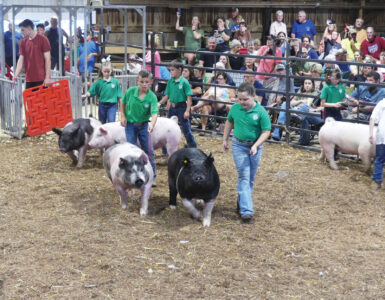Crawl spaces attract rot, mold
PARKERSBURG – About 250,000 homes in America are built with crawl spaces that guarantee the indoor air will be unhealthy and the wood in the home will rot long before it ever should, the president of a West Virginia contracting company said.
New homes completed every day are in addition to the nearly 30 million existing homes built to standards that were the building sciences of the 1950s, said Ricki Edwardson, president of Basement Systems of West Virginia.
“Almost every day, our specialists see crawl spaces with mold or mildew growing on floor joists, floor joists rotting, and excess moisture creating an environment that is more conducive to helping insects thrive than to creating healthy indoor air for families,” Edwardson said. “In reality, this is a national epidemic that not only costs homeowners tens of thousands of dollars in the long run in home repairs, but also often creates an unhealthy environment for people living in the home above.”
Most crawl spaces rely on a thin layer of cheap plastic on the ground, vents on foundation walls and french drains around the perimeter of the foundation walls to control moisture, Edwardson said. The problem is that the plastic doesn’t seal out the moisture from the ground, foundation vents do more to wet the crawl space than dry it out in the summer and french drains, which clog over time, cannot prevent moisture from entering porous concrete block walls even when the home is new, she said.
The solution is to encapsulate the crawl space completely sealing out the moisture from foundation walls and the ground below and then control moisture and water that might enter the crawl space with dehumidifiers or sump pumps, Edwardson said. By doing this, water and moisture levels can be controlled, the indoor air will be significantly cleaner and healthier and the wood in the home will not rot before its time, she said.
Other benefits include creating a much cleaner and healthier environment that results in fewer pests and heating/cooling bills that are reduced by up to 20 percent, she said.
“Studies have shown that between a third and a half of the air in a home comes from the crawl space below,” she said.
“Because of the ‘stack’ effect of air rising in a home, the dirty air in your crawl space ends up being what you breathe in your home above. For someone with allergy or asthma problems, this dirty air with mold spores can trigger severe attacks.”
Edwardson said her employees see problems in many crawl spaces across West Virginia including water-laden fiberglass insulation, floor joists that have rotted in two and sagging floors caused by excess moisture weakening the wood that supports a home. All of this could have been prevented if the home had been built according to the building sciences of today rather than what was recommended in the 1950s, she said.
“Building codes across the nation are just now starting to catch up with the known science about crawl spaces,” Edwardson said.






